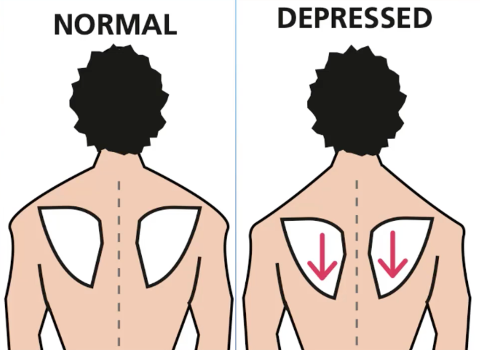Understanding Shoulder Pain
- Tompfeiffer
- Nov 26, 2024
- 3 min read
Go see a doctor if you’ve had a traumatic event like a fall and to rule out more serious forms of shoulder pain like tumors, cardiac conditions, and disease.
This post will educate you about common causes of shoulder pain so you can fix your shoulders!

The shoulder is composed of 4 joints:
Scapulothoracic joint
Acromioclavicular joint
Glenohumeral joint
Sternoclavicular joint
If any of these joints get out of position, pain and dysfunction can occur. To simplify matters, I've categorized shoulder pain into 3 types.
Type 1: Computer Worker
Sitting at a computer with poor posture will lead to habitually rounded posture - kyphosis.

This is associated with a muscular pattern of imbalance called Upper Crossed Syndrome where certain muscles become tight while others become weak long.

Signs:
Rounded posture

Shoulders away from the center (abducted), elevated, and/or upward rotated.



Tight muscles: hips, chest, lats, abdominals, upper traps, upper serratus, rhomboid minor
Weak muscles: glutes, lower traps, lower serratus anterior, rhomboid major
If you associate with the computer worker, you'd want to focus on opening the front of the body and strengthening the back of the body.
Spend more time on your stomach to stretch the hips and abdominals.

Train your mid-back with a TRX row.

Type 2: Posture Pro
This is less common than the computer worker. It's the person who, in attempting to have good posture, has gone too far and is excessively tucking their shoulders back and down.

Signs:
Extended posture
Shoulders depressed, downward rotated, and/or towards the center (adducted)



Tight muscles: chest, lats, hips, low back, shoulder external rotators, lower serratus anterior, rhomboid major
Weak muscles: Upper traps, upper serratus anterior, abdominals
If you identify with the "Posture Pro," you'd want to allow your posture to round slightly.
Hang daily to stretch all the muscles of the torso.

Perform pressing exercises to strengthen the serratus anterior and upper shoulders.

Type 3: Imbalance or Instability
Imbalance from one side to the other can put uneven forces on the shoulders and cause pain. This is why we want to balance antagonist muscles.

Here are antagonist muscles to balance if you have shoulder pain:
Biceps and triceps
Chest and mid back
Shoulder internal rotators and external rotators
Upper traps and lower traps
Hips and glutes
If you lack shoulder stability, it's likely one part of your body is not working as it should be.
For example:
Moving the arm too much before the shoulder blade (poor muscle sequencing)
Shoulder external rotation weakness or inhibition
Scapular winging or tilting

The 4 muscles of the rotator cuff work as one unit to stabilize the upper arm bone in the shoulder joint, and by performing strength tests you can discover if one of these muscles is particularly weak.
Teres Minor Strength Test: External rotation with elbow low

Infraspinatus Strength Test: External rotation with elbow high

Subscapularis Strength Test: Internal rotation ability

Supraspinatus Strength Test: With hand externally rotated, push out for first 5 degrees of shoulder abduction

Study your body to identify weakness or imbalance that might be causing your pain.
The Simple Solution to Shoulder Pain
Here is a basic framework anyone can use to improve shoulder strength and reduce pain. This might not work for everyone, but it will work for most people.
Hang from a Bar
Hanging is not recommended for someone with unstable and dislocating shoulders or with severe osteoporosis. For everyone else, nothing is more beneficial for the shoulder joint than hanging from your hands because it stretches and strengthens the muscles and ligaments of the shoulder.
Begin with your feet on the ground and hold for as long as you can one time per day.
Single Arm Movements
For someone with shoulder pain, single arm presses and rows can help to identify strength differences and they also help to work the stabilization muscles of the shoulders and core. I would avoid bilateral movements while you're still suffering from shoulder pain as these are more likely to make it worse.

What’s best for your individual situation might be different. Use your own discretion and try all the exercises to learn what works best for you. If you’d like a customized plan for you, schedule a consultation with me today.
Stubborn Shoulder Pain not going away
While the above solutions will help most people, some shoulder pain can come from neural issues, eye differences, organ referral, scars, stress, or hip or ankle dysfunction.
To permanently fix your shoulders, you must study yourself to identify and address the cause. Make a list of activities or postures that worsen your pain and those that improve your symptoms.
Once you’ve started training the right way, inflammation can cause pain to persist, so be patient and continue your exercises.
Record yourself when performing exercises to review your lifting technique, or seek a qualified trainer.
If you have questions, comment below or send me a message.
Hope this helps! - Tom






Comments